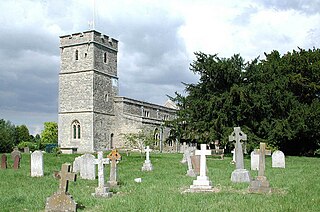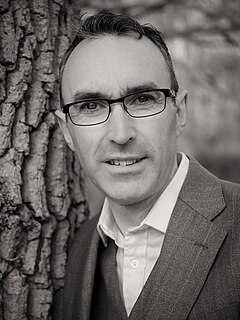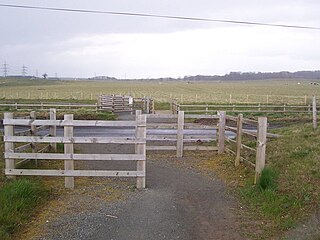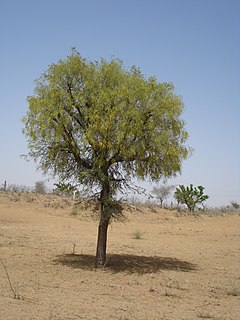Related Research Articles

Coppicing is a traditional method of woodland management which exploits the capacity of many species of trees to put out new shoots from their stump or roots if cut down. In a coppiced wood, which is called a copse, young tree stems are repeatedly cut down to near ground level, resulting in a stool. New growth emerges, and after a number of years, the coppiced tree is harvested, and the cycle begins anew. Pollarding is a similar process carried out at a higher level on the tree in order to prevent grazing animals from eating new shoots. Daisugi, is a similar Japanese technique.

Forest gardening is a low-maintenance, sustainable, plant-based food production and agroforestry system based on woodland ecosystems, incorporating fruit and nut trees, shrubs, herbs, vines and perennial vegetables which have yields directly useful to humans. Making use of companion planting, these can be intermixed to grow in a succession of layers to build a woodland habitat. Forest gardening is a prehistoric method of securing food in tropical areas. In the 1980s, Robert Hart coined the term "forest gardening" after adapting the principles and applying them to temperate climates.

Walton (historically) was a hamlet that is now a district and civil parish in Milton Keynes, ceremonial Buckinghamshire, England. For local government purposes, it is part of the Danesborough and Walton electoral ward.

In the United Kingdom, an ancient woodland is a woodland that has existed continuously since 1600 or before in England, Wales and Northern Ireland. Planting of woodland was uncommon before those dates, so a wood present in 1600 is likely to have developed naturally.

Agroforestry is a land use management system in which trees or shrubs are grown around or among crops or pastureland. This diversification of the farming system initiates an agroecological succession, like that in natural ecosystems, and so starts a chain of events that enhance the functionality and sustainability of the farming system. Trees also produce a wide range of useful and marketable products from fruits/nuts, medicines, wood products, etc. This intentional combination of agriculture and forestry has multiple benefits, such as greatly enhanced yields from staple food crops, enhanced farmer livelihoods from income generation, increased biodiversity, improved soil structure and health, reduced erosion, and carbon sequestration. Agroforestry practices are highly beneficial in the tropics, especially in subsistence smallholdings in sub-Saharan Africa and have been found to be beneficial in Europe and the United States.

Whittlewood Forest is a former medieval hunting forest east of Silverstone in Northamptonshire in England. It is managed by the Forestry England. There are tracts of ancient woodland within it and old ditches can be found at the edges of several individual woods. The area has been the subject of extensive academic historical research. An area of 400 hectares in seven different patches has been designated a biological Site of Special Scientific Interest (SSSI), which is about half the size of an average English parish. It is a Nature Conservation Review site, Grade 2.

Antony House is the name of an early 18th-century house, which today is in the ownership of the National Trust. It is located between the town of Torpoint and the village of Antony in the county of Cornwall, England, United Kingdom. It is a Grade I listed building.
Founded in 1967, Earth Trust is an environmental learning charity which was originally known as the Northmoor Trust for Countryside Conservation. Earth Trust was established by the British engineer Sir Martin Wood to promote environmental conservation through land management, education, and land science. It is a registered charity under English law.

Long Wittenham is a village and small civil parish about 3 miles (5 km) north of Didcot, and 3.5 miles (5.6 km) southeast of Abingdon. It was part of Berkshire until the 1974 boundary changes transferred it from Berkshire to Oxfordshire, and from the former Wallingford Rural District to the new district of South Oxfordshire.
Forest farming is the cultivation of high-value specialty crops under a forest canopy that is intentionally modified or maintained to provide shade levels and habitat that favor growth and enhance production levels. Forest farming encompasses a range of cultivated systems from introducing plants into the understory of a timber stand to modifying forest stands to enhance the marketability and sustainable production of existing plants.

Pterocarpus soyauxii, the African padauk or African coralwood, is a species of Pterocarpus in the family Fabaceae, native to central and tropical west Africa, from Nigeria east to Congo-Kinshasa and south to Angola.
Today, forest and woodland cover in Uganda stands at 49,000 km² or 24% of the total land area. Of these 9,242.08 km² is tropical rainforest, 350.60 km² are forest plantations and 39,741.02 km² is woodland. 30% of these areas are protected as national parks, wildlife reserves or central forest reserves.

The Sylva Foundation is an environmental organisation focusing on trees and forestry established in 2006, and registered as a charity in England and Wales in 2009 and with the Office of the Scottish Charity Regulator in 2010. The organisation was co-founded by Sir Martin Wood and Dr Gabriel Hemery. Its office is at the Sylva Wood Centre in Long Wittenham in Oxfordshire, England.
Greenhaven Woodland Burial Ground is a natural burial ground located in the village of Lilbourne, 5 miles (8 km) from the town of Rugby, England. It opened in 1994 and was the first privately owned natural burial ground in the country. Greenhaven is situated on 14 acres (57,000 m2) of former agricultural land and originally catered for approximately 7,000 plots, but as of 8 December 2008, roughly 5,000 of these remain.

Dr Gabriel Hemery is an English forest scientist (silvologist) and author. He co-founded the Sylva Foundation with Sir Martin Wood, a tree and forestry charity established in 2009.

Jeskyns is a park near Cobham, in Kent, England. A former farm, it was reopened as a large open-space recreational area in 2007, with areas being developed as new wildlife habitats.
The National Urban Forestry Unit (NUFU) was a British charity established in 1995 to promote urban forestry. Urban forestry is the care and management of single trees and tree populations in urban settings for the purpose of improving the urban environment. Urban forestry involves both planning and management, including the programming of care and maintenance operations of the urban forest.

Arid Forest Research Institute (AFRI) is a research institute situated in Jodhpur, Rajasthan, India. The institute conducts scientific research in forestry in order to provide technologies to increase the vegetative cover and to conserve biodiversity in the hot arid and semi-arid regions of Rajasthan and Gujarat. It operates under the Indian Council of Forestry Research and Education (ICFRE) of the Ministry of Environment and Forests, Government of India.

Institute of Wood Science and Technology (IWST) is a Research institute situated in Bangalore in Karnataka. It works under the Indian Council of Forestry Research and Education (ICFRE) of the Ministry of Environment and Forests, Govt. of India. It is recognized to be a Centre of Excellence for Sandalwood Research and Wood Science

Tropical Forest Research Institute (TFRI) is a Research institute situated in Jabalpur in Madhya Pradesh. It works under the Indian Council of Forestry Research and Education (ICFRE) of the Ministry of Environment, Forest and Climate Change, Government of India.
References
- ↑ "Earth Trust: Paradise Wood". www.earthtrust.org.uk. Archived from the original on 2016-08-05. Retrieved 2016-08-02.
- ↑ Clark, J. and Hemery, G. (2009) Outcomes from 15 years of hardwoods research at the Northmoor Trust. Quarterly Journal of Forestry. 103, 212-219.
- ↑ "Archived copy" (PDF). www.northmoortrust.co.uk. Archived from the original (PDF) on 25 September 2006. Retrieved 22 May 2022.
{{cite web}}: CS1 maint: archived copy as title (link) - ↑ "Home".
- ↑ "Archived copy". Archived from the original on 2005-11-16. Retrieved 2009-10-18.
{{cite web}}: CS1 maint: archived copy as title (link) - ↑ "Archived copy". Archived from the original on 2009-08-28. Retrieved 2009-10-18.
{{cite web}}: CS1 maint: archived copy as title (link) - ↑ "Archived copy" (PDF). Archived from the original (PDF) on 2009-12-09. Retrieved 2009-10-18.
{{cite web}}: CS1 maint: archived copy as title (link) - ↑ "Archived copy". Archived from the original on 2009-10-12. Retrieved 2009-10-18.
{{cite web}}: CS1 maint: archived copy as title (link) - ↑ "Archived copy" (PDF). Archived from the original (PDF) on 2016-03-03. Retrieved 2009-10-18.
{{cite web}}: CS1 maint: archived copy as title (link) - ↑ "Archived copy". Archived from the original on 2016-03-03. Retrieved 2009-10-18.
{{cite web}}: CS1 maint: archived copy as title (link) - ↑ Hemery, G.E. (2000) Juglans regia L: genetic variation and provenance performance. In: Department of Plant Sciences. University of Oxford.
- ↑ Clark, J., Hemery, G. and Savill, P. (2008) Early growth and form of common walnut (Juglans regia L.) in mixture with tree and shrub nurse species in southern England. Forestry. 81, 631-644.
- ↑ Jones, T., Feber, R., Hemery, G., Cook, P., James, K., Lamberth, C. and Dawkins, M. (2007) Welfare and environmental benefits of integrating commercially viable free-range broiler chickens into newly planted woodland: a UK case study. Agricultural Systems. 94, 177-188.
- ↑ Yates, C., Dorwood, P., Hemery, G. and Cook, P. (2007) The economic viability and potential of a novel poultry agroforestry system. Agroforestry Systems. 69, 13-28.
- ↑ "Earthwatch: Paradise Wood - Experimental Plantation in England".